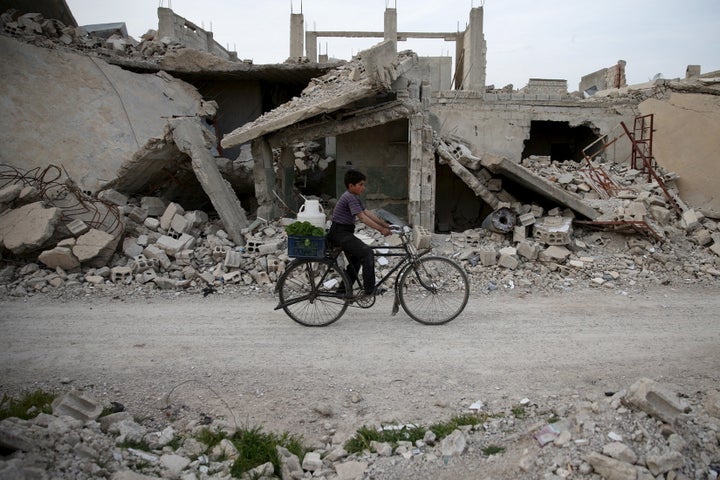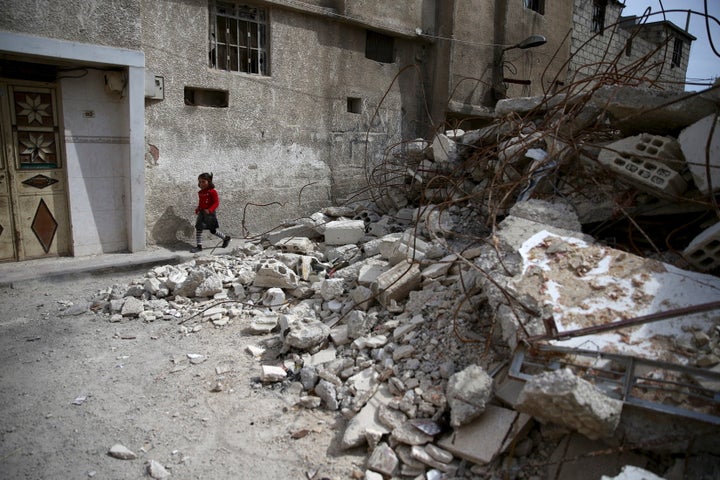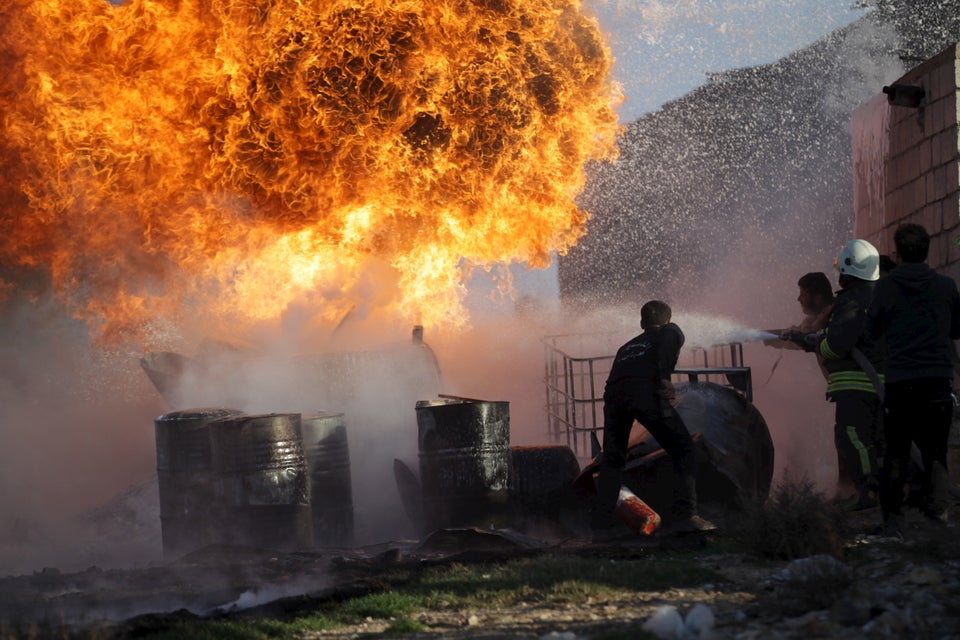
Hundreds of unexploded cluster bombs dropped by Syrian government forces in and around Eastern Ghouta since 2012 pose a deadly threat to people in the besieged rebel-held area of northern Damascus.
GHOUTA, SYRIA – Hundreds of cluster bombs dropped by the Syrian government, which has been supported by the Russian air force, on Eastern Ghouta now lie unexploded throughout the rebel-held area northeast of Damascus.
“At first we thought it was shrapnel. We were standing close to [the cluster bomb] without a care,” said Abu Ahmad, 56, a resident of Eastern Ghouta’s Douma, one of the hardest-hit districts in rural Damascus.
The group had been standing next to what they thought was a scrap piece of metal, blown out into the field after an air strike. But when when Abu Ahmad’s 16-year-old absent-mindedly nudged the object with his foot, it exploded.
“It killed my son instantly,” said Abu Ahmad,” and it blew my leg off and severely injured my neighbor.”
These explosive ordnances are designed to release a number of projectiles upon impact. They can detonate at any time, particularly if stepped on or tampered with, potentially maiming or killing unsuspecting civilians.

Cluster bombs can be either fired from artillery or dropped from an aircraft, and do exactly what their name suggests. They spread clusters of rounded bomblets, which can be easily confused with small balls when unexploded, over large swaths of land, causing indiscriminate damage.
“We call it the ‘container,’ as it contains smaller bombs that spread across large areas when dropped,” said Abu Omar, a brigade leader fighting with the Free Syrian Army (FSA) in Eastern Ghouta.
“Cluster bombs are most dangerous when they don’t immediately detonate and pose a real threat to farmers working in fields or children playing in open areas.”
Cluster munitions are some of the many weapons used by the Syrian government. They bring maximum destruction with minimal accuracy. Like barrel bombs, internationally banned cluster bombs are cheaper alternatives to precision guided munitions.
Watchdog groups like Human Rights Watch (HRW) have reported Syrian government use of cluster munitions since 2012 – banned by a total of 119 countries due to their imprecise nature and the fact that they often fail to explode on impact – although there has been a marked rise in their use since the Russian military intervened in September 2015.
“The surge in cluster munition use has taken place in the context of intensified Russian and Syrian military action to establish control over key strategic territory in the governorates of Aleppo, Damascus, Idlib, Homs and Hama,” according to a February 2016 report released by HRW.
According to Abu al-Bara’, a technician working with the FSA’s engineering unit in Eastern Ghouta, cluster bombs aren’t the only new type of weapons the Syrian government has used lately.
“The government forces have used heavy artillery, airdropped missiles, and used locally made ‘elephant missiles’,” he said. “[The government] has also been using Iranian weapons, such as Zelzal and Fajr missiles.”

Russia’s involvement in the Syrian conflict has brought new military technologies. Abu al-Bara’ asserts that with the Russian arrival, the Syrian government began heavily using cluster bombs on rebel militias and civilian populations across opposition-held territories.
“We are no longer seeing the old-school mortars that explode once they come into contact with the ground,” he said. “Today, some of these new technologies have their own safety release systems that only detonate when they come into contact with a moving object. Some of them even have a timer setting to self-detonate.”
Apart from being deliberately set not to detonate unless they come into contact with a moving object, Abu al-Bara’ explained why these bombs remain intact for long periods of time. “The reasons behind this could be faults in production or storage of the weapons. For example, if the bomb is damp or wet when dropped, it might not explode right away,” he said, “or the detonator might be poorly connected to the bomb.”
“We [the engineering unit] estimated that over 5% of cluster bombs dropped by the government do not detonate immediately,” he added.

One of the groups working to solve the problem of unexploded bombs is the Syria Civil Defense, a group of volunteer rescue workers also known as the “White Helmets.” Once the air force drops cluster bombs on a residential area, the White Helmets rush to the site to evacuate injured civilians and conduct a thorough search for unexploded bombs.
“When we first arrive to the scene, we make sure that all wounded civilians received proper emergency care. We then evacuate the area carefully and call for a team of engineers who inspect the area and take samples of what they think could be cluster bombs,” said Adnan, a 25-year-old White Helmet worker in Douma.
The Syrian Civil Defense staff also work on raising awareness among residents – especially those who have children – about the dangers of these hidden bombs. “We urge adults and children to stay away from unidentified objects, and always look carefully around the area before they walk,” Adnan said.
“We distribute educational pamphlets and put up posters in most areas in Eastern Ghouta to inform people about the deadly dangers of tampering with these devices.”
This article originally appeared on News Deeply. For weekly updates about the war in Syria, you can sign up to the Syria Deeply email list.
